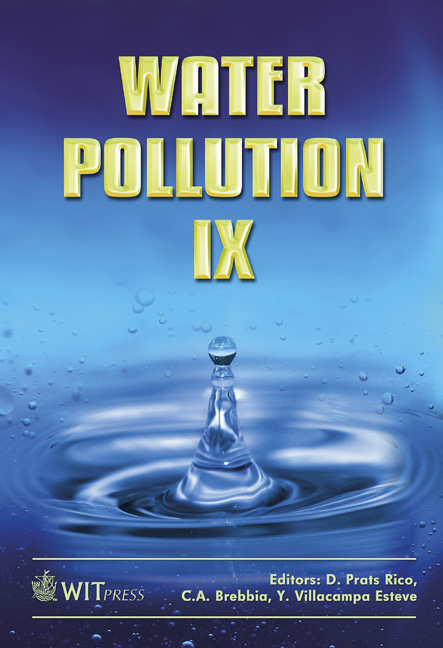Treatment Of Slaughterhouse Wastewater With Iron Electrodes
Price
Free (open access)
Transaction
Volume
111
Pages
7
Page Range
545 - 551
Published
2008
Size
292 kb
Paper DOI
10.2495/WP080541
Copyright
WIT Press
Author(s)
Ü. Tezcan Ün, A. S. Koparal & Ü. Bakir Öğütveren
Abstract
This study is mainly focused on the electrocoagulation treatment of slaughterhouse wastewater for determining effects of the basic operating parameters such as current density, and supporting electrolyte dosage using iron electrodes. The performance of the cylindrical electrochemical reactor was evaluated in batch experiments. While one pole of the power supply was connecting to the reactor as an anode, the other was connected to a stirrer for operation as a cathode. Experiments were carried out by introducing the cattle slaughterhouse wastewater into the reactor and applying a certain amount of current to the circuit. The removal efficiency of the COD increased with increasing current density. The removal efficiencies of 51.3%, 53.8%, 59.9% and 61.2% were obtained for the current densities of 5, 10, 15, 20 mA/cm2 with the energy consumptions of 15, 48, 91 and 168 kWh/m3 respectively. However increasing the Na2SO4 dosage, which was added as a supporting electrolyte, from 0.1 to 0.2 M has an adverse effect on COD removal. It can be concluded from this study that treatment of slaughterhouse wastewater can be achieved by applying electrocoagulation. Keywords: electrocoagulation, COD, slaughterhouse wastewater, iron electrode, organic matter. 1 Introduction The slaughterhouse industry is a very old human activity and, although it is still a relatively small-scale industrial sector, its environmental impact has grown
Keywords
electrocoagulation, COD, slaughterhouse wastewater, iron electrode, organic matter.





